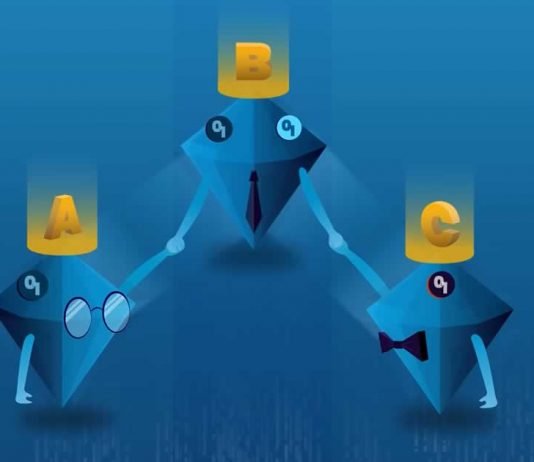Dutch physicists at the QuTech research institute demonstrated for the first time that quantum information, Qubits, can be reliably transferred between network nodes that are not directly connected to each other by building the first multi-node quantum network. An article about it appeared in the journal Nature.
This project is an important step toward the quantum internet. The quantum internet, which many scientists want to create, is based on the ability to transfer qubits between the nodes of the network. This will enable all of the options available on the regular internet, including the secure exchange of sensitive information, the linking of multiple quantum computers to increase computing power, and the use of high-precision coupled quantum sensors.
The nodes of such a quantum network consist of small quantum processors. Transferring quantum information between these processors is a difficult task.
In quantum teleportation, qubits disappear on the sender side and reappear on the receiver side without crossing the intermediate space — thus, the possibility of their loss is excluded. Teleportation, however, requires https://techlog360.com/ibm-eagle-127-qubit-quantum-processor/a quantum complex connection between the sender and receiver, a reliable method for reading quantum processors, and a capacity for the temporary storage of qubits.
In 2021, the same team of researchers succeeded in creating the world’s first three-node quantum network (a network that connects three quantum processors). These nodes were located at a distance from each other, in the same building; one of them (named Bob) had a physical connection (via fiber) to two others (Alice and Charlie), which allowed them to establish an entanglement link with each of them (each node had a communication qubit). Bob had an extra qubit to act as a memory — it could store the previously created quantum bond while a new bond was being established.
After the Alice-Bob and Bob-Charlie quantum links were established, a set of quantum operations created the Alice-Charlie quantum link. QuTech researchers have established entanglement between three nodes and demonstrated the possibility of teleporting qubits between two neighbouring nodes.
This time, for the first time, they achieved teleportation between non-adjacent nodes — they teleported qubits from Charlie’s node to Alice’s node using Bob’s intermediate node.
It took three steps. First, quantum entanglement had to be established between Alice and Charlie. Then it was necessary to create a teleportable qubit. This was followed by a teleportation step from Charlie to Alice — the researchers jointly measured Charlie’s qubit (sender) and its half of the entangled state (Alice had the other half). This measurement caused the teleportation of the quantum state of the qubit, i.e. the information disappeared from Charlie’s side and immediately reappeared on Alice’s (the recipient’s) side.
To achieve this teleportation, the researchers improved their experimental setup in several ways, starting with a detection system. Previously, signals indicating entanglement came from the same photodetectors that detected the photons used for entanglement, which could lead to false signals. This time, the team installed an additional detection path to eliminate these false signals. They also improved the qubit reading procedure and implemented active protection of memory qubits during entanglement generation.
The team now plans to increase the number of memory qubits to run more complex protocols. They are also planning to launch the system outside the laboratory, including through the optical fibers of a real network.


